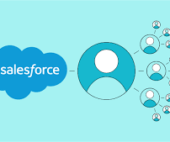Core Intelligence
- Emergence of new model architectures enabling sophisticated world modeling
- Cross-domain reasoning for enhanced adaptability
- Automation of scientific discovery and hypothesis generation
- Advanced problem-solving in unstructured and novel domains
Interface & Control
- Transition to a code-first paradigm for AI agent development
- Enhanced adaptability through dynamic, self-improving systems
Infrastructure & Scaling
- Expansion of compute clusters and power infrastructure to meet growing demands
The trajectory of AI advancements and their economic implications are becoming more defined. The introduction of ChatGPT Plus at $20/month provided basic conversational AI, while ChatGPT Pro raised the bar with enhanced reasoning at $200/month. OpenAI’s recent multi-agent research and Altman’s assertion that “we know how to build AGI” suggest that the next frontier—fully autonomous agents—may come at exponentially higher costs. As Noam Brown notes, some of the hardest problems may demand millions of dollars in compute resources per solution, signaling a future where increasingly capable AI systems will emerge with significant computational investments.
The foundational elements for AI agents that approach human-like problem-solving are now in place: breaking down tasks, maintaining context, learning from experience, leveraging tools, and refining actions based on feedback. While these capabilities function effectively in controlled environments, real-world applications remain a challenge due to complexity and unpredictability.
The coming years will focus on refining these systems—experimenting with optimal integrations, establishing reliable methodologies, and uncovering best practices for building robust AI agents. The technology is here, but mastering its orchestration to handle real-world challenges remains the next major hurdle. The AI agent revolution has begun, but we are still in the early stages of truly understanding how to harness its full potential.










